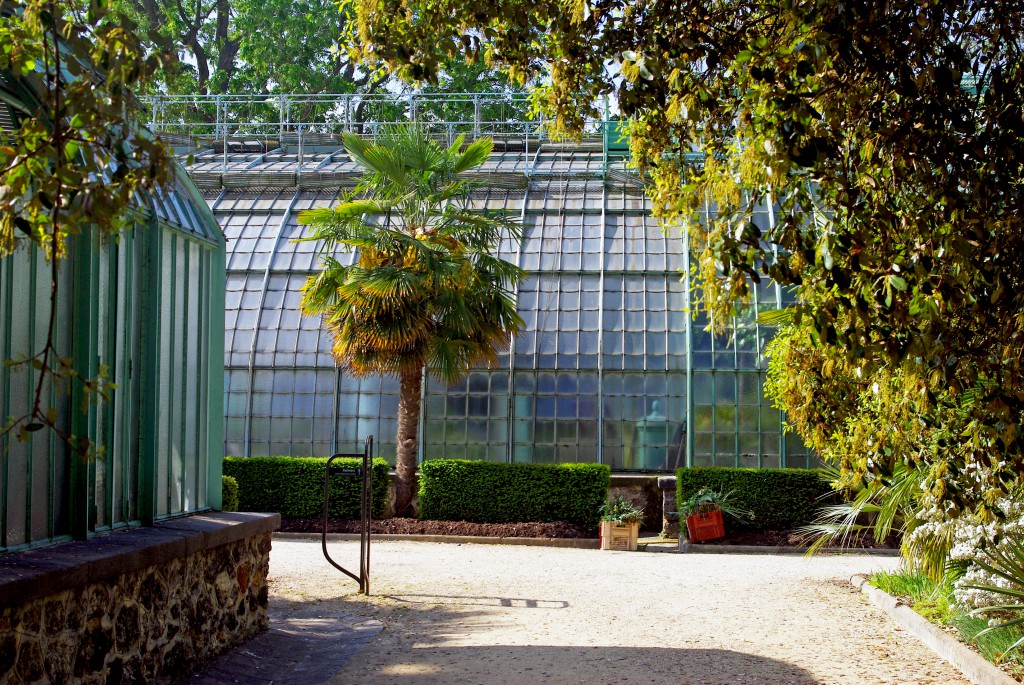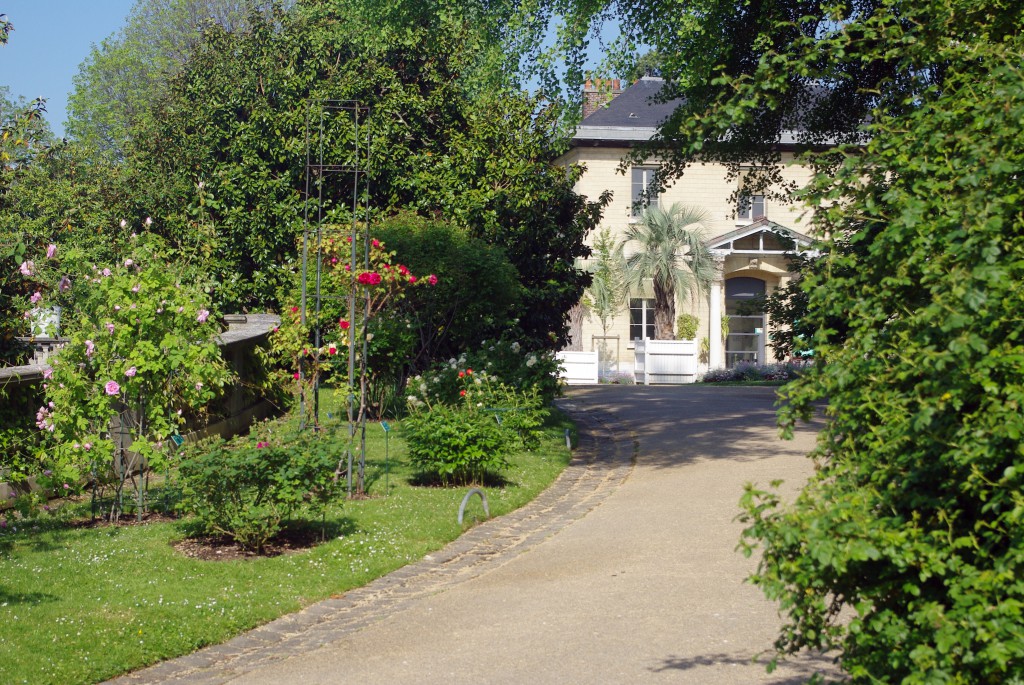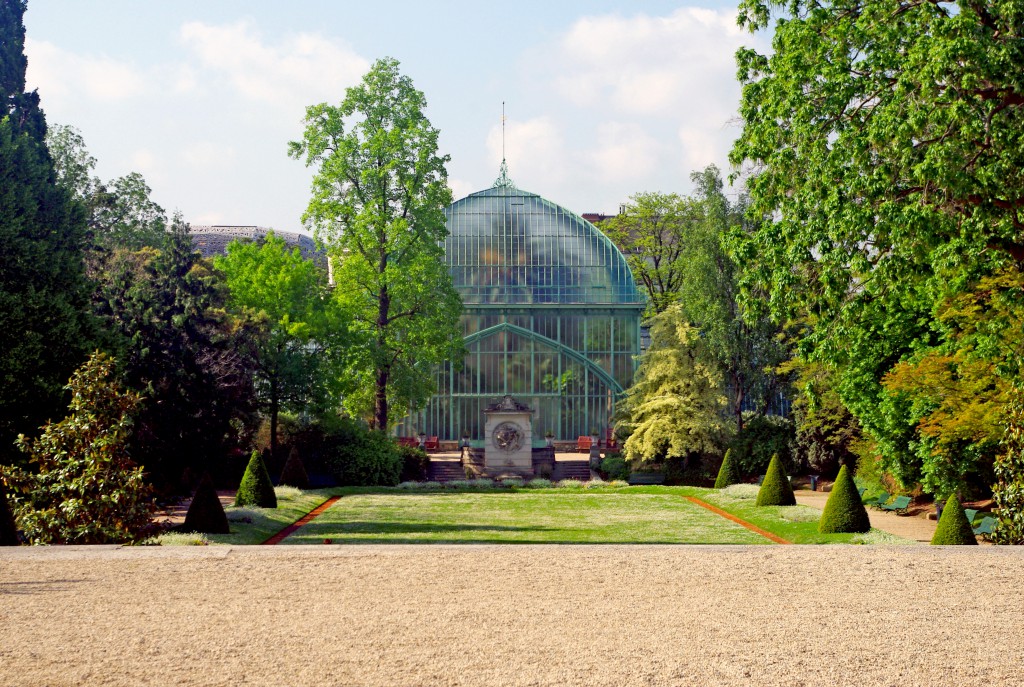Unknown to most Parisians, the elegant Jardin des Serres d’Auteuil is a botanical garden located at the southeastern edge of the Bois de Boulogne in the 16th arrondissement of Paris. The small garden is sandwiched between the Roland Garros tennis complex and the Parc des Princes stadium. With its botanical collections, the Jardin des Serres d’Auteuil is the only place in Paris to discover a remarkable diversity of plants.
What to see in the Jardin des Serres d’Auteuil
The Jardin des Serres d’Auteuil consists of a complex of impressive conservatories part of the four botanical gardens managed by the City of Paris (Jardin Botanique de la Ville de Paris) along with the Parc de Bagatelle, the Parc Floral de Paris and the Arboretum de l’École du Breuil.

A botanic garden was initially created on the site in 1761 under Louis XV, who designed a garden decorated with flowerbeds and greenhouses.
The present-day turquoise blue greenhouses were designed in cast iron between 1895 and 1898 by architect Jean-Camille Formigé. Covering 3 hectares, the Serres d’Auteuil aimed to showcase exotic flora. Tropical plants are found in the greenhouses, and temperate-zone plants grow in the surrounding beds.

The greenhouses grow about 100,000 plants annually to decorate the interior of Paris’ municipal buildings. Each one of them is temperature controlled to create the ideal climate for the plants they shelter.
The Entrance
The Jardin des Serres d’Auteuil entrance is marked by a fine wrought iron gate flanked by two Classical style pavilions: the West and East pavilions.

The Japanese Garden
The small Japanese garden with its scree and stone lantern.

The Balustrade
On each side of the terrace are two curved lanes which slope gently down to the central lawn. Rare roses and peonies grow along the balustrades. The pilasters that decorate the retaining walls of the terrace feature 14 mascarons sculpted by Auguste Rodin.


The central lawn
The central lawn comprises a formal garden (Jardin à la française) bordered by the West Plateau and the East Plateau greenhouses. The South end of the vast French-style parterre is marked by the Dalou Fountain, whose medallion depicts the Triumph of Bacchus. Behind it stands the monumental Palm House (Palmarium). Elegant china-looking garden vases are scattered along the edges.


The Palm-House
The Palm House (Palmarium) offers luxuriance, calm and voluptuousness. The cast iron structure resembles a glass cathedral intended to give plants light and heat. Constructed in the 19th century, the Belle Époque greenhouse houses exotic tropical plants from steamship. This tropical environment also features a small pond with Japanese carps and a small aviary.




The Tropical Greenhouse
Adjacent to the Palm House, the 19th-century greenhouse was designed like a winter garden or cabinet of botanical curiosity. It houses plants with a similar and harmonious need for light, moisture and warmth: banana trees, coffee bushes, papaya trees…


The Orangerie Greenhouse
The recently renovated Orangerie Greenhouse reopened to the public in June 2016.

The English Garden
The English garden is situated West of the park and contains beautiful trees and heather earth plants.

Square des Poètes
This relatively small garden features small stones on which have been engraved verses from famous French poets. In the centre stands a statue of Victor Hugo by Rodin.


Practical information
- Entrance to the garden is free
- The closest métro stations are Porte d’Auteuil (line 10 to the direction of Boulogne-Pont de Saint-Cloud) or Michel-Ange Molitor (line 10 to the direction of Gare d’Austerlitz).
- More practical information about the Garden and how to get there (in French).




